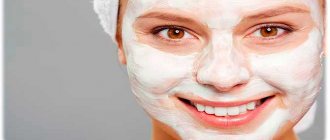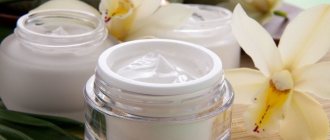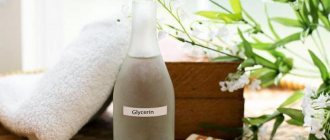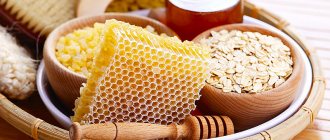All women dream of smooth and well-groomed heels.
But often various harmful factors, such as vitamin deficiency, low-quality shoes, and impaired water balance, have a detrimental effect on the skin of the feet, making it excessively dry, rough and very unattractive in appearance. Cracks form in the heels, causing severe pain in the legs when walking and mental suffering.
Those who have encountered this problem have heard good reviews about such a fairly popular method as glycerin for cracked heels, which perfectly softens and moisturizes the skin of the feet, but most do not risk trying it and are distrustful.
Often, women rely on expensive medical procedures in salons, or steam and peel off the skin with pumice stones themselves, expecting a miraculous cure, but in the end the skin becomes even drier and the cracks even deeper. It turns out to be a vicious circle and the most common glycerin will help you break out of it. In combination with some additional means (vinegar, ammonia), it gives a stunning result. The effect is noticeable after just a few procedures, and with systematic use, cracks in the heels become less and less and, as a result, your feet will become smooth, soft and take on a natural healthy shade.
Glycerin for heels - treatment of heels with glycerin
To fully solve your heel problems, you will need from 3 to 6 complete, correctly performed procedures. It is best to perform them every other day.
Even with the most complex problems with heels, corns, dryness and cracking of the skin of the feet, products with glycerin will be very effective. They will help:
✔ Remove dead skin cells.
✔ Prevent the formation of calluses and corns in the initial stages.
✔ Moisturize and perfectly soften the skin on the feet and, in particular, on the heels.
✔ Heal the effects of microtraumas and cracked heels.
✔ Improve the color of the skin of the feet and so on.
Rough heels can turn into amazingly smooth heels if you treat them with glycerin.
And the consequences of not caring for them for many months can be eliminated literally in a relatively short period of time: about two weeks.
Before you start performing procedures, find out what factors most often provoke deterioration of the skin of the feet. This information will completely or partially prevent the recurrence of problems.
So, among them:
Genetic causes
In other words, it is heredity. This relationship has been established scientifically. It is, in fact, caused by a tendency to keratinize skin cells due to its initial increased roughness and roughness.
Wearing synthetic clothing
Unnatural fabrics can affect the condition of the skin in the most negative way. Including leading to its coarsening and cracking.
Frequent use of tight or uncomfortable shoes
Often, as a result of this, corns form. And they, in turn, provoke poor circulation in all layers of the skin and its necrosis. It turns out to be a kind of chain reaction. And all this is because of such harmless, at first glance, tight shoes.
Thermal and chemical damage
The influence of factors such as thermal or chemical damage. For example: burns, sunburn, among them, improper use of synthetic skin care products, and so on. They are inevitably reflected on your feet, the mirror of which is your heels, which are so vulnerable to them.
Freezing, weathering
Weathering, overheating or freezing, prolonged exposure to dry air and similar factors. By the way, you can fall under their negative influence even in your own home or apartment, where you seem to be completely protected. After all, in winter, during the heating season, indoor air humidity often does not exceed 20-30%, and this is extremely insufficient to maintain the skin in its normal physiological state, especially the skin of the heels, with increased pressure on them when walking.
Insufficient foot care
Its absence may not immediately affect their condition. And care itself is not the key to healthy heels. But, with regular cleansing, moisturizing and nutrition, the chances that problems with them will not arise in principle increase significantly.
Internal problems
Among them: deficiency of vitamins and minerals in the body, hormonal imbalances, problems in the functioning of internal organs, and so on. Often these factors are combined with external ones, which were listed above, and this gives a clear effect: the heels change their color, the skin becomes rough, cracks, calluses and corns form on the feet.
All problems can be solved quite simply with the correct use of products prepared on the basis of glycerin, even at home. Their high efficiency is due to the ability of glycerin to penetrate very deeply into the layers of the skin, affecting its cells, allowing them to be maximally saturated with moisture by binding to water molecules.
But, when using such products, and before that - when preparing them, you should strictly adhere to the recommendations, since exceeding doses of glycerin can cause the opposite effect: aggravate the problem, causing even more severe dehydration of the skin and its cracking.
Glycerin is a very affordable and relatively safe substance. You can buy it for your own purposes either by visiting almost any pharmacy or by using the services of online stores (pharmacy chains).
The cost of one bottle of this product will be much cheaper than special expensive creams and balms, which, moreover, are of questionable effectiveness. What can we say about the services of specialized beauty salons. Moreover, by preparing the drug for your feet yourself, you can be sure that it is safe, useful and effective, and its use will bring the desired positive result.
Even for preventive purposes, certain preparations should be carried out:
- Before applying the product, the legs are steamed in a basin, for which hot water with sea salt is used (a teaspoon per liter of liquid).
- The basic principle is to ensure that the water is actually hot. The temperature should be such that you can withstand it without getting burned.
- The procedure lasts about fifteen minutes, after which the keratinized particles are removed using pumice (If there are cracks on the heels, then do not rub your feet), and the heels are lubricated with glycerin.
Glycerin with vinegar for heels - properties and recipe
One of the most popular recipes for “restoring” heels is based on glycerin with the addition of vinegar. At the same time, the vinegar itself should not be ordinary kitchen vinegar 9%, but apple vinegar.
The fact is that apple vinegar has much more pronounced healing properties, explained by its unique vitamin and mineral composition. Let's take a look at what each of these two components does and how it affects your heels.
Glycerin has the following effects:
✔ Softening and moisturizing.
✔ Removes dead skin layers.
✔ Significantly reduces the risk of formation of corns and cracks on the skin.
✔ Makes heels smoother and gives them elasticity.
✔ Acts proactively against drying out the skin.
✔ Accelerates the regeneration of small wounds and scratches.
✔ It has antiseptic, antiviral, antibacterial and antifungal effects.
In turn, apple cider vinegar:
✔ Softens even the hardest and most compacted stratum corneum of the skin on the heels and feet in general.
✔ Eliminates excessive dryness of the skin of the feet.
✔ Helps effectively resist any fungal infections.
Vinegar, in combination with glycerin, is used in various recipes, and can be used in the form of: masks, compresses, baths.
Recipe for a mask with glycerin and apple cider vinegar for feet
You need apple cider vinegar. It should be mixed with pharmaceutical liquid glycerin so that these ingredients are taken in approximately equal proportions.
Take, for example, 2 tablespoons of these liquids. The resulting mixture should be used to treat the feet, especially problem areas and heels. It can also be applied to cracks.
After application, wrap your feet in plastic while wearing socks. Before using the prepared liquid, do not forget to steam your feet.
Upon completion of steaming, natural volcanic pumice should be used. And after that - the acetic-glycerin solution itself.
You need to keep it on your feet for at least 2 hours. After this, remove the plastic, wash your feet with warm, clean water, and dry with a soft towel made of natural fabric. After all this, a gentle regime for the legs is recommended for the next 4-6 hours.
Therefore, it is better to perform such procedures before bedtime, or during the day - on weekends. It is better to carry out the procedures every other day, so that the total is 7-9 “sessions”.
If you replace vinegar with vinegar essence, then this mixture can be used twice a day, morning and evening, to achieve a faster effect. Usually there is a little free space left in a bottle of glycerin, which is just enough for the required amount of essence. If desired, you can add a few drops of your favorite essential oil to the recipe, this will improve the aroma and make self-care more enjoyable.
Compress recipe with glycerin and apple cider vinegar for feet
They are prepared in this way: 6 tablespoons of glycerin should be mixed with 2 teaspoons of apple cider vinegar. Next, thoroughly moisten clean, sterile gauze, previously folded in 4-5 layers, with this solution.
Squeeze out excess liquid from the gauze, apply the gauze itself to the heels and other problem areas, then wrap the feet in cling film. Don't forget to wear socks on top, preferably warm ones. It is better to apply this compress overnight, but it can be applied for a couple of hours.
In the morning, you should thoroughly wash your feet and lubricate them with a natural nourishing cream, allowing it to be absorbed. After this, it is advisable not to put pressure on your feet for at least several hours in a row. The procedure is performed every other day, the course is 5 procedures.
Recipe for foot baths with glycerin and apple cider vinegar
This is perhaps the easiest way to restore the health and beauty of your feet. In advanced cases, it is better to resort to the use of compresses or masks. But for prevention, or in the initial stages of heel problems, baths are an almost ideal option.
To properly prepare a softening bath, you need to take: 2 liters of clean water, 6 tablespoons of apple cider vinegar, 2 tablespoons of liquid pharmaceutical glycerin.
Heat the water, add glycerin first, then vinegar, stir everything well. Dip your feet into the liquid, holding them in it for up to 20 minutes, then treat them with volcanic pumice, rinse under warm running water, and wipe until dry with a soft towel. Give your feet rest and rest for 1-2 hours.
These baths are easy to prepare and have an amazing effect. Thus, thanks to their regular use, 99% of problems with heels and skin of the feet can be prevented, even during the dry summer period.
You can take baths regularly (once every 3-4 days). After a month of using them, it is better to give your feet a week of rest, then resume the procedures again.
Glycerin for cracked heels - how to use
A mixture of glycerin and natural apple cider vinegar is very useful for combating even deep cracks in the heels, not to mention smaller ones.
Preparation. To prepare the necessary product, you should mix apple cider vinegar with glycerin in approximately equal proportions (1:1).
For example: 100 milliliters of glycerin and 100 milliliters of apple cider vinegar.
Application. Rub the liquid that results from mixing these two components into your feet, and especially carefully into your heels, 2 times a day: in the morning and in the evening before bed.
The number of procedures depends on achieving the desired effect. This can be either 3-4 or 9-10 procedures.
Natural apple cider vinegar is a liquid of 3-5%. Use only natural product.
Application in cosmetology
Glycerin (or glycerol) is an industrial by-product, obtained from the saponification of fats or produced synthetically, and belongs to trihydric alcohols. For external use, pharmacies dispense it in the form of a 20 ml liquid solution without a prescription.
It is a colorless, transparent, sweetish, viscous liquid, odorless. They are used in many industries, including food, medicine, and cosmetics. We will talk in more detail about the role of glycerin in cosmetics.
Glycerin + ammonia for heels
This alcohol, combined with liquid glycerin, creates an excellent effect, allowing your heels to become healthier.
The properties of glycerin have already been discussed, but here’s what you should know about the properties of ammonia – read right now: it has a pronounced disinfecting and disinfecting effect, and also cleanses the skin and eliminates itching and redness.
It is best if you prepare a compress from ammonia and glycerin.
Before making the mask, the feet are thoroughly steamed. Further:
- Take two ingredients in equal proportions 1:1 and mix to obtain a homogeneous mass.
- Place the mixture in the refrigerator for 20 minutes.
- Moisten the gauze with it, which needs to be folded in layers.
- Make a compress, put a plastic bag on top, put socks on your feet and go to bed.
- In the morning, we remove everything and wash it off, clean our feet with pumice.
Do the procedure several times a week until your heels become smooth.
For prevention, such actions are performed once every two weeks.
An alcohol compress with glycerin is very similar in effect to a compress with vinegar and glycerin. Their impact is almost identical. What to choose is up to you. Perhaps you will like it better, or would be better suited, with vinegar, or perhaps ammonia.
What is important to know about glycerin before starting procedures?
Glycerin has the ability to absorb moisture from the environment . Therefore, be sure to pay attention to the fact that in the room where you will lie with the mask, the air is not dry. Otherwise, the effect will be exactly the opposite. The product will begin to draw moisture from your skin cells - there is none indoors! Therefore, in winter, place containers with water near the radiators; in summer, ventilate the room and also provide sufficient moisture, just in case. For example, turn on a humidifier.
Glycerin and hydrogen peroxide for heels
Peroxide and glycerin for heels are used in almost the same way as in the previous case.
A mixture of glycerin and hydrogen peroxide mixed in equal quantities is placed on the steamed, cleansed skin, a gauze bandage is applied, the sock is pulled on and you go to bed.
In the morning, the area is vigorously rubbed with pumice. Do not use a blade or other sharp objects to cut off dead skin. This way you will only harm yourself.
And then the cream is applied.
The manipulation is performed every three days until your feet become soft.
Therapeutic masks for heels with glycerin
It is believed, and deservedly so, that heel masks can solve any problems not only with the heels, but also with the skin of the feet in general. Most often used in combination with glycerin are natural apple cider vinegar or ammonia. They have already been described above. But, as practice shows, the combination of glycerin with olive oil also gives a very good positive effect.
Glycerin with olive oil
How to prepare and use a mask with glycerin and olive oil. Mix 1.5 teaspoons of liquid pharmacy natural glycerin and 6 teaspoons of fresh olive oil.
This mask should be applied to the skin of your feet for 40 minutes, while wrapping them well in polyethylene. After this, treat your feet with volcanic pumice, wash them and lubricate them with nourishing cream.
You can do it a little differently: first steam your feet in warm water with natural sea salt, then apply a mask with oil and glycerin, then rinse it off and only after that apply a nourishing cream.
Glycerin with medicinal herbs
Healing mask with glycerin and herbs. They (herbs) are used instead of olive oil. Such a mask is advisable in especially severe and advanced conditions.
It's easy to prepare. For this you will need: field chamomile (35 grams), dried oak bark (35 grams), natural glycerin (1 tablespoon).
You can prepare oak bark and chamomile yourself. But, if you need them “here and now,” then you can simply visit the pharmacy and purchase them. In terms of price, they are inexpensive, and you can find them in almost every pharmacy, especially if it has a “herbal specialty”.
Step by step action:
- herbs must be poured with boiling water in a proportion of 35 grams per glass of water;
- the resulting broth should be filtered and mixed with a tablespoon of glycerin;
- the product should be rubbed into the feet, after which cotton socks should be put on;
- In the morning everything is washed off with warm water.
Oak bark is an excellent antiseptic, and chamomile has an anti-inflammatory effect, glycerin will make your heels soft.
Course - 7-10 days, apply - daily. This remedy will undoubtedly help you heal all the wounds on your feet and get rid of even large cracks after 10 days of daily procedures.
Glycerin with lemon
Bonus recipe. Bath with lemon and glycerin. It will help solve all problems with feet and heels, and also give the skin freshness and give it a pleasant smell. This recipe is especially effective for cracks.
So, you should take 3 liters of water, boil it, and then let it cool. Squeeze the juice from half a medium-sized lemon into it, adding 1.5 tablespoons of glycerin. Place your feet in the bath, keeping them there for up to twenty minutes.
During this, you need to prepare the second part of the recipe: juice from the second half of the fruit, combined with sea salt. This substance will be used as a makeshift scrub. Rub your feet with it after the bath. Next, rinse off the remaining scrub with warm water and dry it with a cotton towel, after all this applying a nourishing natural cream. Such procedures can be performed for preventive purposes (1-2 times a week, regularly) or for therapeutic purposes (every other day, for 14-21 days). The result may pleasantly surprise you.
Precautions or contraindications:
✔ Individual intolerance to any of the components of the product used.
✔ Severe mechanical damage to the feet of a traumatic nature.
✔ Pregnancy and lactation (can be used after doctor's approval).
✔ Age up to 14 years.
✔ If after applying the mask to your heels and feet you feel discomfort, immediately wash it off with water.
What you shouldn't forget
- After using any softening procedures with glycerin, you need to regularly smear your heels with a moisturizing nourishing cream, especially in the spring and summer, and it is also advisable to wear socks and comfortable shoes.
- A real positive result can only be achieved if you perform the procedures regularly and prepare the products exactly according to the recipe.
- For feet and heels, it is recommended to choose liquid glycerin only of the highest degree of purification - at least 99. In this case, its softening effect will be maximum.
- Glycerin is an affordable and effective remedy, but do not use it in its pure form. It can only be used in combination with water or, for example, oil, alcohol and so on. Use it wisely and stay healthy.
The described masks and compresses will restore smoothness to your heels, eliminate keratinization, and get rid of cracks.
If your problem is caused by a fungus, be sure to consult a doctor and do not start treatment at home without his approval. Don’t forget about caring for your feet; pay them the same attention as other parts of the body, because troubles are so easy to prevent, but treatment can take a long time. based on materials from narodnayamedicina.com, zdorovyda.ru
See also:
Treating cracked heels
Soft heels easily and quickly
Contraindications
The pharmaceutical drug glycerin for wrinkles around the eyes must be used extremely carefully, especially in the delicate area of the eyelids. By following simple rules, you can achieve a really good moisturizing effect, visually rejuvenate your face, and give it a rested look. When independently producing cosmetics based on glycerin, it is worth considering the following features of this substance:
- Glycerin is rare, but can cause an allergic reaction. Since the skin in the eyelid area is thin, cosmetic preparations for it must be selected especially carefully. Before using home cosmetology recipes, it makes sense to conduct a basic rapid test to determine the absence of an undesirable reaction to trihydric alcohol.
- Concentrated alcohol is not used for care procedures in the eyelid area. It is used most often with water-based liquid components: herbal decoctions, fruit juices, vitamin complexes.
- It is not recommended to use glycerin creams and eye masks in hot summer weather when additional moisturizers are not available.
- Glycerin creams are contraindicated for use in the morning under makeup: the drug has a viscous, sticky texture, to which particles of street dust, pollen, etc. can stick.
- Any glycerin mask should be washed off without using alcohol-containing lotions. Due to the sticky consistency of the drug, it is not so difficult to remove it efficiently. For these purposes, you can use wet wipes soaked in a decoction of herbs.
- Any glycerin creams are contraindicated for systematic regular care.
- Glycerin for wrinkles around the eyes is not used in tandem with silicones (in this case, toxic compounds are formed that poison skin cells).
- Glycerin cosmetics are contraindicated in the presence of skin diseases, especially during periods of exacerbation of symptoms, the presence of open ulcerative wounds, purulent abscesses, and deep cuts.
- This type of alcohol washes out melanin (“washes away” the tan, whitening the skin).
- Alcohol that has expired is not suitable for cosmetic purposes.
Most glycerin-based recipes around the eyes call for removing the residue with water. During cosmetic procedures, some discomfort may be experienced due to the viscosity of trihydric alcohol. If a water compress is used, this effect is not so noticeable. After the procedures, the skin becomes smooth, toned, and looks fresh.









